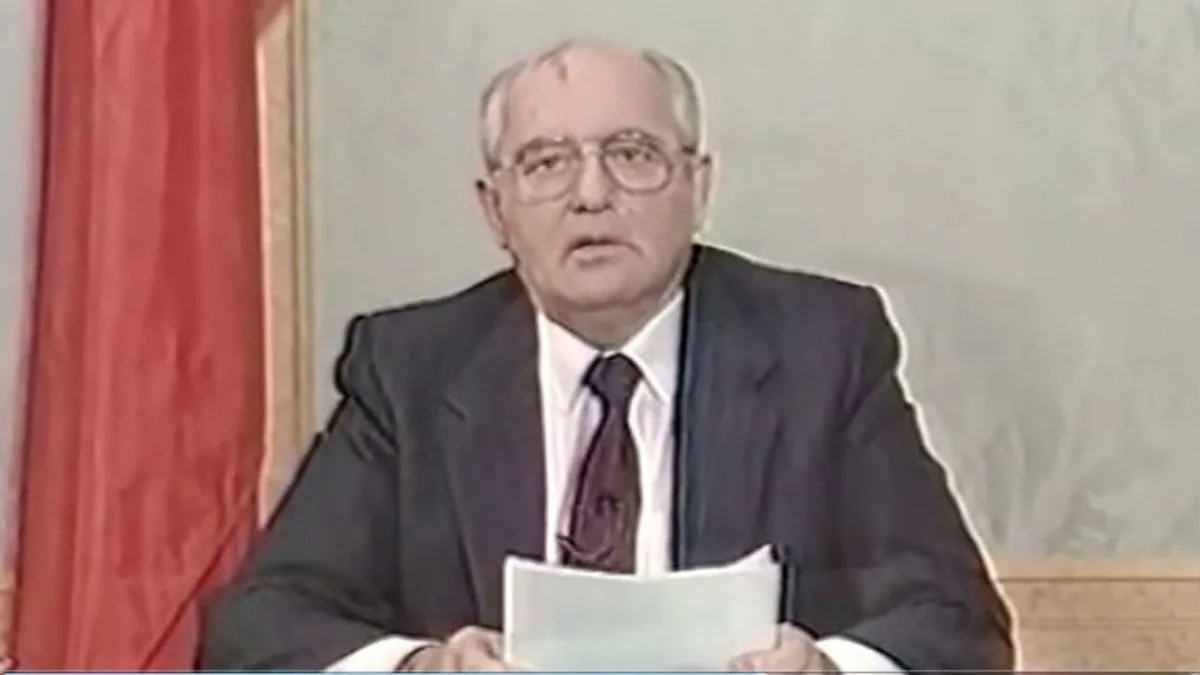Pictured: Gorbachev’s televised resignation. 25th December 1991.
Historical Crisis Focus
Ahead of the conference, we thought it would be useful to dive a bit deeper into our two special crisis committees. First up, it’s our historical crisis committee. In recent years, our historical crises have included Empress Wu’s succession crisis in eighth century China, the Korean War, and the Chernobyl disaster. In 2025, we are delving into one of the turning points in international history: the fall of the Soviet Union.
The disintegration of the USSR transformed international relations, marking the end of the Cold War which had dominated the global stage since the Second World War. It created a vacuum with the USA as the leading superpower, for the time being. The USSR, excluding its influence in its satellite states in Eastern Europe, covered a sixth of the world’s land surface, so its dissolution and fragmentation inevitably had chaotic and uncertain consequences. Therefore, expect this committee to be fast-paced and driven by action rather than rhetoric!
Timeline
11th March 1985 - Mikhail Gorbachev became General Secretary of the Communist Party of the Soviet Union.
16th November 1988 - Estonia was the first country within the USSR to declare state sovereignty.
9th November 1989 - Fall of Berlin Wall.
11th March 1990 - Lithuania was the first country within the USSR to declare full independence.
12th June 1991 - Boris Yeltsin was elected as the first President of Soviet Russia.
19th August 1991 - Attempted coup by Communist Party hardliners against Gorbachev failed.
25th December 1991 - Gorbachev resigned as President of the Soviet Union.
26th December 1991 - The USSR is formally dissolved and this historical crisis committee begins…
Countries
This committee includes countries from across the globe, with diverse demands and perspectives, especially given many of the nations only officially gained independence on the same day as this committee begins.
As might be expected, this committee includes the former republics of the Soviet Union, now independent countries: Armenia, Azerbaijan, Belarus, Estonia, Georgia, Kazakhstan, Kyrgyzstan, Latvia, Lithuania, Moldova, Russia, Tajikistan, Turkmenistan, Ukraine, and Uzbekistan. Whilst these new countries shared common aspects in their histories under Soviet control, each had their own desires going forward.
The committee also includes countries which had experienced heavy degrees of Soviet influence, although not officially forming a part of the USSR. These countries, known as satellite states, include Bulgaria, Czechoslovakia, Hungary, Mongolia, Poland, and Romania. Neighbouring countries which were not influenced by the USSR, but for which the Soviet Union still dictated much of their foreign policy, include Afghanistan (in a state of armed conflict since the 1970s), Finland (which the USSR had invaded in WWII), and South Korea (which the USSR had opposed during the Korean War in the 1950s). This committee also involves the neighbouring countries of Albania and Yugoslavia which, whilst both communist, were very much independent of the USSR. Other communist countries such as Cuba, Laos, North Korea, and Vietnam are also represented in this committee, highlighting the global impact of the crisis.
Last but not least, we have the superpowers of China, France, Germany, India, the United Kingdom, and the USA. These external powers will play a crucial role in influencing the newly independent states as they seek to create international trade links.
Therefore, the historical crisis committee looks like it could be an exciting one!

